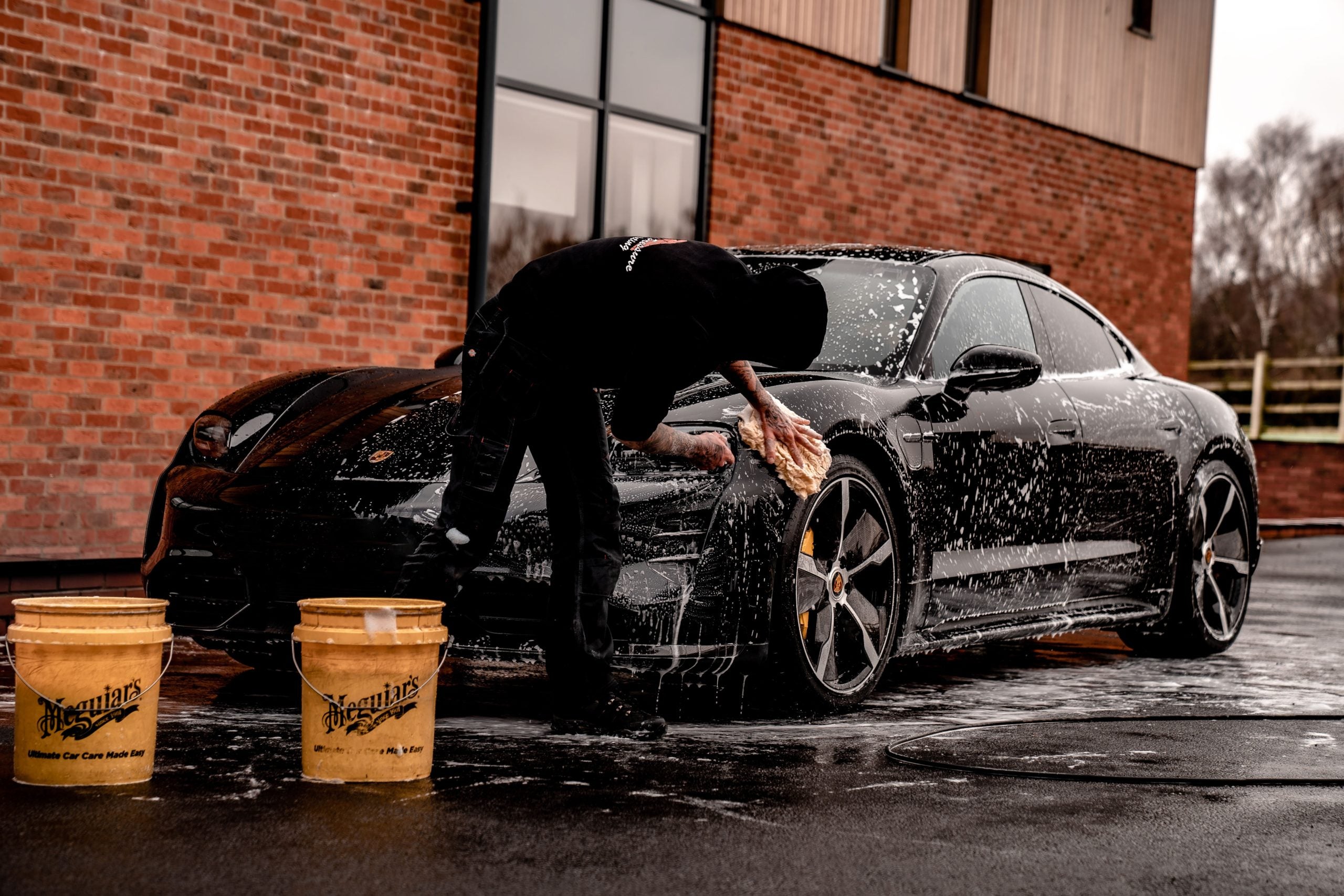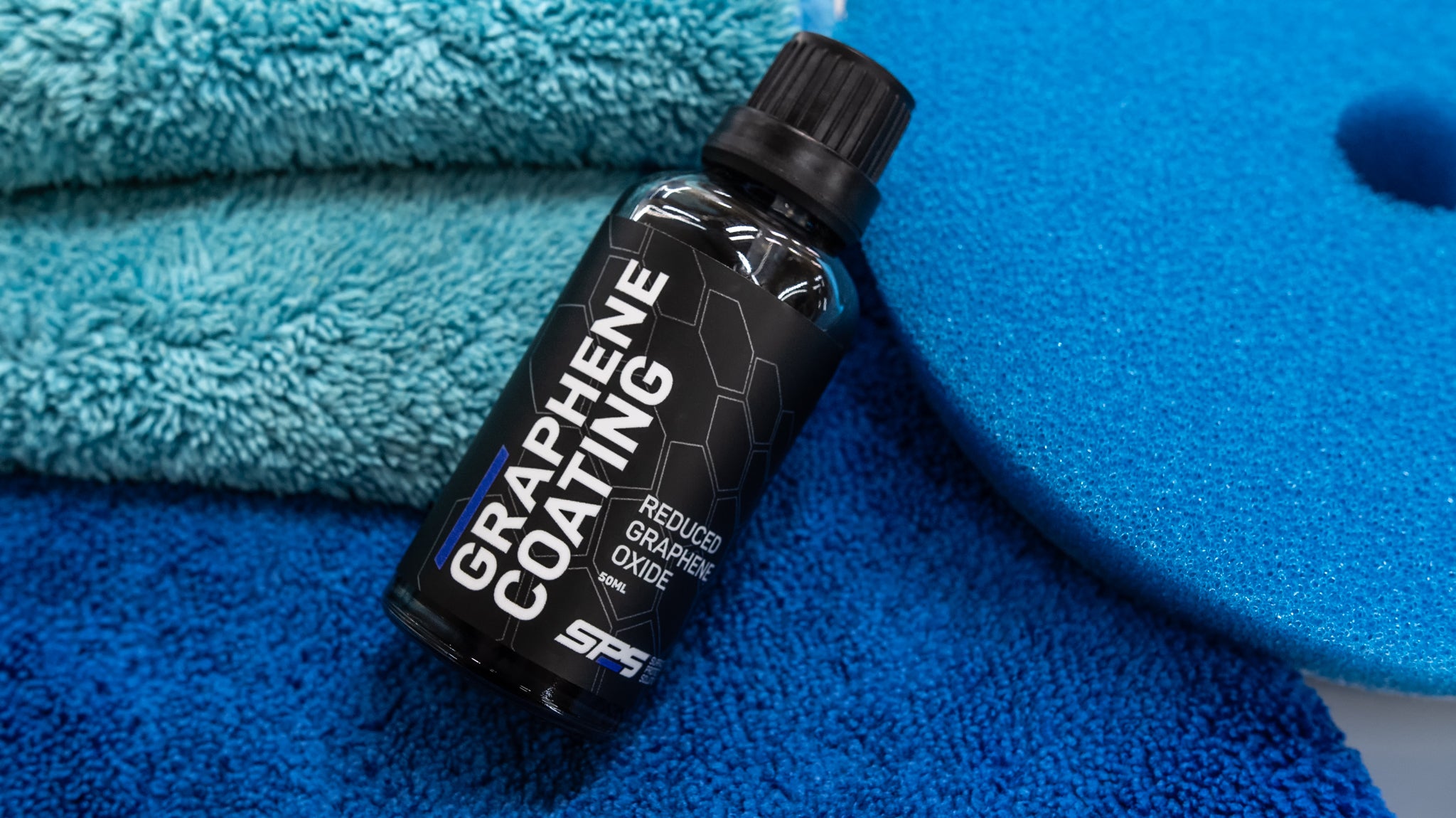Table of Contents
- How Do You Maintain Graphene Coatings?
- The First 24-48 Hours
- The First Week
- The Dos & Don'ts Of Graphene Maintenance
- Refresh The Resiliency. Use Graphene Detailer
- Your Local Graphene Installer Is Here To Help
- Frequently Asked Questions
Keep your SPS Graphene coating looking and performing as well as it did the day it was installed!
HOW DO YOU MAINTAIN GRAPHENE COATINGS?
With a little bit of maintenance, you can keep your coating operating at optimum efficiency for years to come! SPS Graphene is an incredibly strong and resilient coating that only requires a little bit of maintenance to prolong its protection, hydrophobicity, color depth, and reflective shine. To get the most out of your coating, here are a few key maintenance tips and recommendations to ensure your vehicle looks top-notch for years to come:
THE FIRST 24-48 HOURS
The first day or so after the coating is applied is critical to ensuring it can harden properly. During this window, avoid washing your vehicle (you likely won’t need to) and steer clear of parking below trees or anywhere that’s prone to bird droppings, tree sap, or another contaminant. Covered parking, like a garage or underground parking, would be ideal during this stage of the process.
THE FIRST WEEK
During the first week, your SPS Graphene coating is going through its natural curing process. While your coating is curing, the use of detergents or soaps is not recommended. By using these before your coating has completely cured, you could damage and reduce its effectiveness and life span. If you need to remove any harmful surface contaminants such as bugs, tar, sap, or bird droppings, we recommend using a hose or pressure washer followed by a soft microfiber towel if needed. We always recommend drying the surfaces after to prevent hard water spots.
Adding a reminder to your smartphone or computer one week from your application date is a quick and easy way to prevent damaging your freshly coated vehicle.
THE DOS & DON’TS OF GRAPHENE MAINTENANCE:
In the next bit, we’ll go over how to wash a car with a Graphene Coating.
Wash As Often As You Need To
With Graphene coatings, sometimes less is more. When you start to notice building on the surface, we recommend a simple wash with a mild detergent to prevent excessive build-up from road contaminants.
Think of your coating like glass in your shower. When the glass is clean, the water will run off the surface nicely, but over time as soap builds on the surface, the water will start to “stick”. Once you clean the glass, the water will start to bead off again. Your Graphene coating is no different and will require some maintenance to preserve and prolong the coating.
A Quick, Gentle Wash Is Best
If you’re washing at home, a soft mitt and gentle automotive soap are best, followed by a rinse with a garden hose or pressure washer. A touch-less car wash is a great option too, but only choose the basic package that offers a quick wash. You have already protected your vehicle with the most advanced coating in the industry, so there is no need to pay extra for a spray-on wax. Spray on waxes can clog up the pores of the coatings limiting the hydrophobic properties and leaving a white powdery residue behind. While Graphene coatings are very strong, it’s still best to avoid anything abrasive that could scratch the surface, such as brushes (especially ones at the local car wash) or clay bars.
Pro Tip: If you’re handwashing your vehicle, use a different bucket and mitts/sponge for the wheels and tires to prevent cross-contamination and dirt from rubbing into your coating.
Dry With A Microfiber Cloth
Lastly, dry your vehicle with a few microfiber cloths to achieve maximum shine and the best results. Using tap water to rinse the soap off can leave mineral deposits behind if it’s left to dry on its own. You shouldn’t need to use excessive pressure, let the cloth absorb the water and then follow up with a second cloth to dry the car completely.

REFRESH THE RESILIENCY, USE GRAPHENE DETAILER
To get the absolute best results from your Graphene coating, we recommend following up your coating with a thorough clean every four months to remove any build-up from everyday driving, and finishing with our Graphene Detailer to rejuvenate the coating.
Our Graphene Detailer is available in two sizes: the 473ml bottles are ideal for owners, while the 1 Gallon jugs are a great value for detail shops. If you have several coated vehicles, are a detail weekend warrior and love maintenance washes, the 1 Gallon jugs also provide great value!
Note: The detailer is best-used within two years of purchase. We recommend choosing the amount that best fits your needs.

YOUR LOCAL GRAPHENE INSTALLER IS HERE TO HELP
For optimal results from your coating, we recommend booking an annual maintenance wash with your local Graphene installer. If you’re having a hard time remembering where your vehicle was coated, use this tool to find an SPS Authorized Installer. They have the tools, expertise, and attention to detail that will keep your coating working at optimum efficiency for years to come. Simply contact the installer and book your vehicle in for an SPS Graphene Maintenance Wash.

FREQUENTLY ASKED QUESTIONS
Should I Wax My Graphene Coating?
Waxing your graphene coating is not necessary and is not recommended. Waxing will leave behind a white residue, clog up the pores of the coating reduce the hydrophobic properties, and ultimately damage the coating. Use SPS Graphene Detailer as a wax substitute which will help maintain the life of your coating and increase the hydrophobic properties.
Can I use SPS Graphene Detailer on an uncoated vehicle?
SPS Graphene Detailer can not only be used to enhance and boost your Graphene coated vehicle(s) but it can also be used as a standalone, short-term, protection option on all the same surfaces that our 5yr coating can be applied to.
Can I use SPS Detailer as a drying agent?
After washing your vehicle and rinsing the soap off, you can apply SPS Detailer directly to the wet surface of your vehicle before drying. This will act as a slip solution to the surface preventing your drying towel from causing swirl marks over time




